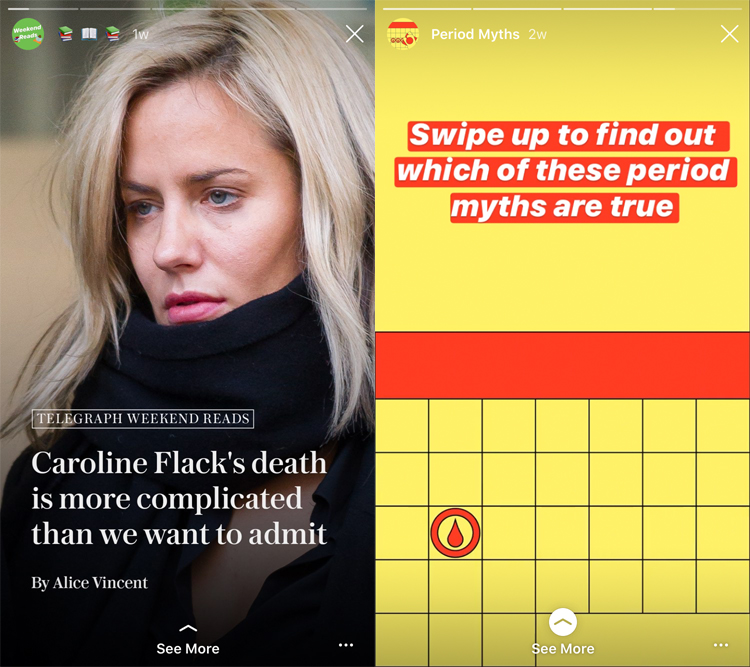
Love it or hate it, Instagram matters to news. The Reuters Institute for the Study of Journalism Digital News Report 2019 made that clear: a quarter of 18-24-year-olds use Instagram for news weekly.
One news organisation placing importance on this platform is The Telegraph with its 543,000 followers to date on its main account. As of February 2020, it had nearly doubled its followers in just over a year.
How did they do it? Journalism.co.uk spoke to The Telegraph’s senior social media editor, Francesco Zaffarano about some of the strategies behind the numbers.
Qualitative analysis
It all starts with understanding what treatment suits a particular type of content based on numbers.
"The first step is analysing the data to understand what content performs best and why," Zaffarano explained.
He began by trawling through 500 pieces of content in a four-month period towards the end of 2019.
He started to label content into categories: topics like lifestyle or politics, mood such as uplifting or curious, and styles ranging from plain pictures to quote cards.
The idea is to understand what the ideal treatment looks like. Though, as Zaffarano explained, this is not a hard rule but rather a rule of thumb.
"It was a way to be more aware of the performance of our content and what our audience reacts well to."

With quote cards, for example, he found that it was better to avoid cutouts of the picture: audiences seemed to prefer simplicity.
It meant they also started to prioritise more varied content, like IGTV videos and Instagram Stories, differentiating its output to reach a wider audience.
The power of the weekly format
Two weekly formats emerged which seemed to go down a hit with its audience: the Weekend Reads, a series of four to six still pictures posted on Instagram Story each Saturday to present a selection of longreads like a magazine; and the Myth Buster, a weekly quiz that uses subtle animations to test users’ knowledge on a topic and prompt them to swipe up on the final tile for the answers.
Both formats drive around 300 per cent more traffic to the website than an average Telegraph Instagram Story. What is more, from June 2019 to February 2020, The Telegraph has seen a monthly click-through traffic surge by 1120 per cent.

It is surprising given many publishers are told that audiences do not want to be diverted off the platform and therefore native content is key for engaging with social media audiences. But Zaffarano has proved that audiences can be persuaded to leave the platform with the right motivation.
"For the Weekend Reads, the level of curation and love can make all the difference," he explained.
"For the Myth Buster, instead, we noticed that the curiosity gap we created and how relatable the topic is matters more than it being pegged to a news event."
Repurposing Snapchat Stories
The Instagram strategy also leverages some of the content readily available from the Snapchat daily edition.
He selects stories that will work for the slightly older Instagram audience and tweaks them accordingly. That might be extending the Instagram clips or changing the final swipe-up call-to-action.

He has also learned not to worry about different Stories running one after another. Previously, the social team used to wait 24 hours for a Story to expire before jumping to a different topic.
"What we have realised is that our audiences expect to jump through different Stories, [so there is no point waiting]."
Revamping vertical accounts
The final part of the plan was to breathe new life into The Telegraph’s vertical accounts and launch new ones, such as Telegraph Royals and Telegraph Women’s Sport.
The Royals account, as an example, launched in May 2018 but failed to get much traction for its first year of life.
It has boosted its audience by 167 per cent in about a year with a mixture of tactics. By putting community editor Naomi Southwell in charge of the account, they provide bespoke content for enthusiastic followers.
What has worked is to focus on royal news, fashion and commentary and getting royal fashion experts to make regular appearances too to answer our followers’ questions.
Are you looking for new ways to engage your audience? Join us at Newsrewired on 4 June at MediaCityUK where we will talk about effective audience engagement strategies. Click here for more details and tickets
Free daily newsletter
If you like our news and feature articles, you can sign up to receive our free daily (Mon-Fri) email newsletter (mobile friendly).
Related articles
- UAE's The National uses free reader registration to counter the decline of SEO
- How to get started with user needs: learnings from the Reuters Institute, Metro.co.uk and smartocto
- Rachel Duffy, senior social media editor of The Telegraph, on using Reddit for news
- 10 creative ways to interview celebrities and experts
- Journalism.co.uk reader responses: what we have learned so far from our audience survey









